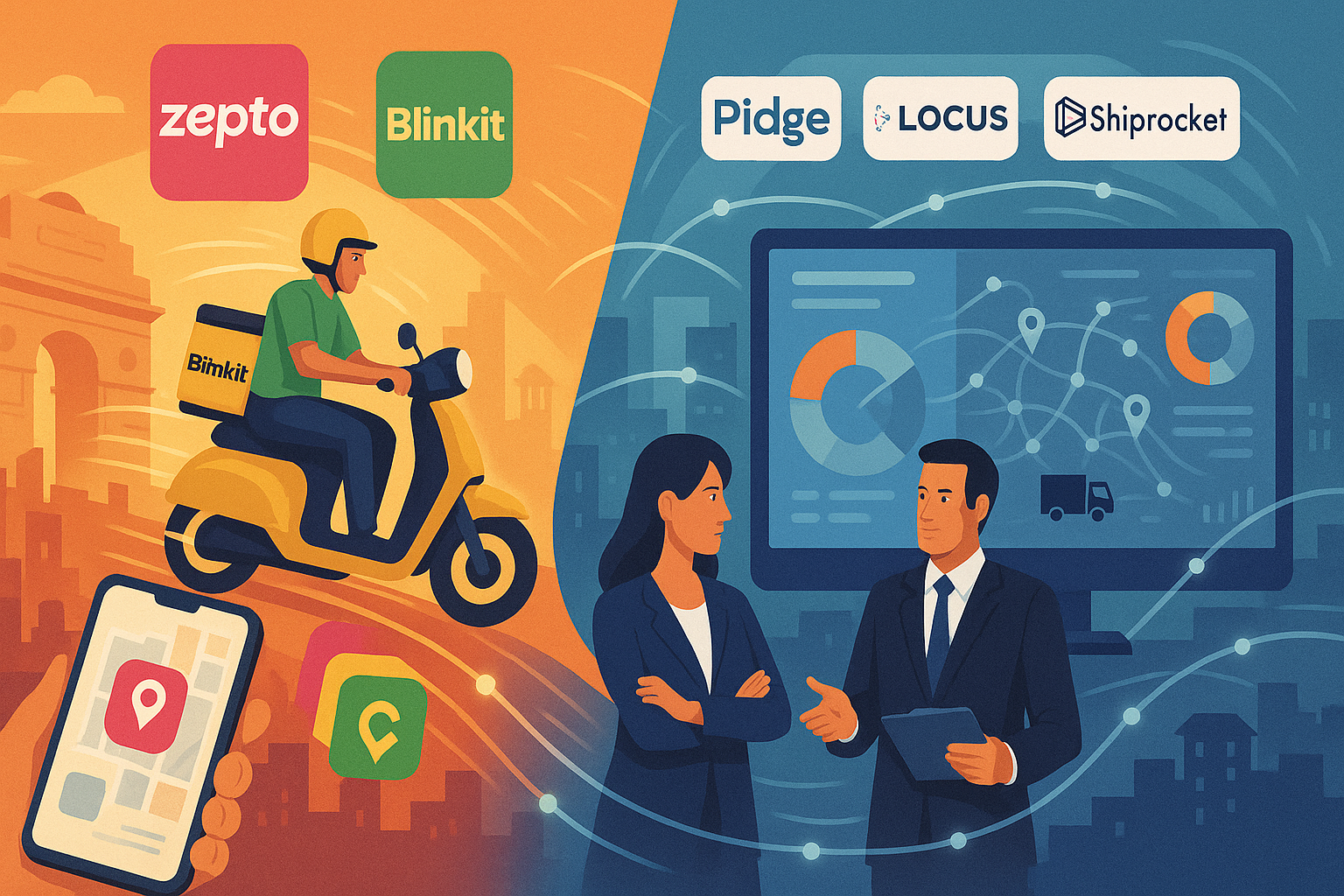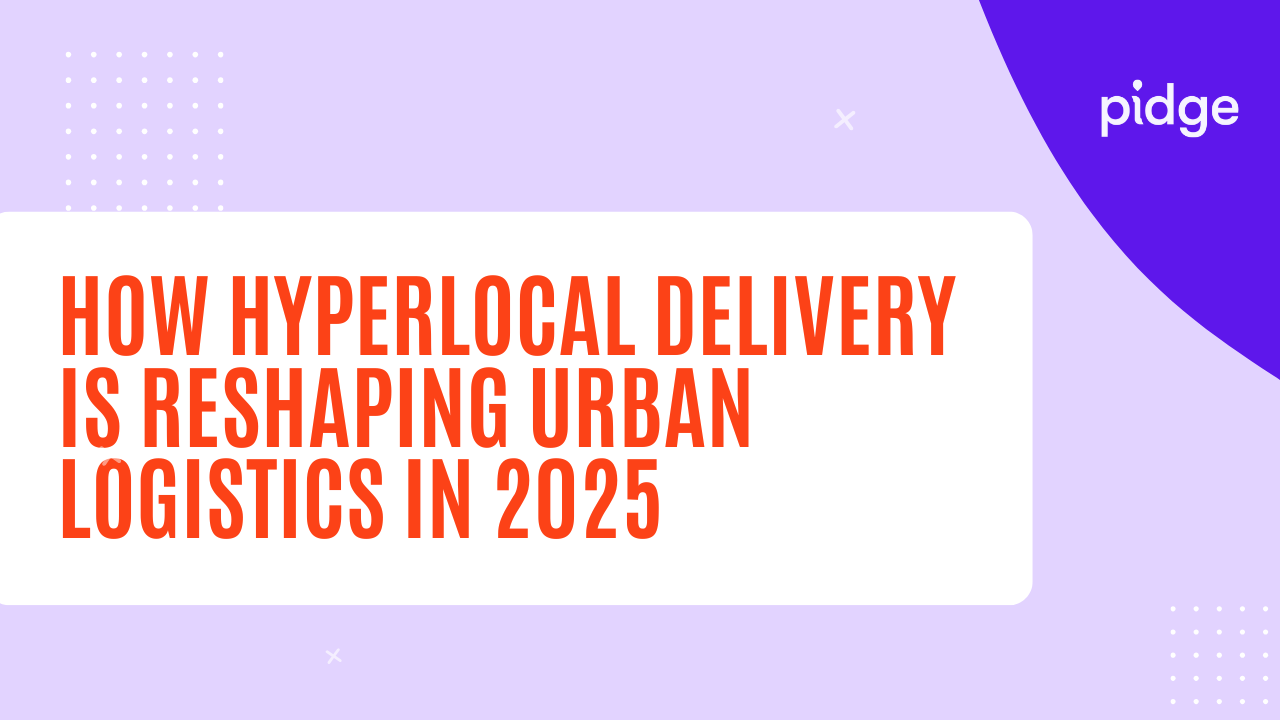Which Platforms Offer the Fastest Hyperlocal Delivery in INDIA

Strong 8k brings an ultra-HD IPTV experience to your living room and your pocket.
There is a different understanding of fast delivery in the era of instant gratification. Next-day delivery is not impressive anymore. Today, it is about delivering products to the customers within less than 30 minutes, and even within 10. This development has led to an emerging trend when it comes to logistics: hyperlocal delivery.
Hyperlocal delivery is delivering customer orders to a nearby region, generally 2 to 15 kilometers, by using local inventory, intelligent routes, and fast activation. It drives grocery deliveries, pharmacy re-fills and cloud kitchens and even same-day e-commerce. In India, where urban density and consumer demand for convenience are at their peak, several platforms are racing to claim the crown for fastest delivery.
However, speed is not the complete picture. Some platforms deliver directly to customers. Others enable businesses to build and control their own hyperlocal networks. This article explores both consumer-facing apps and logistics enablers - Zepto and Blinkit, as well as the technology-first platforms, such as Pidge, Locus, and Shiprocket.
The Rise of Hyperlocal and Quick-Commerce Delivery
In the last five years, India’s delivery environment has transformed. What started as a competitive edge offering same-day delivery has now become table stakes. Gradually, the consumers in urban areas are looking groceries, medicine and home supplies be delivered in an hour or ASAP.
This demand has fueled a wave of innovation in what’s now called quick commerce. Firms are betting big in dark stores (mini-warehouses inside urban areas), micro-fulfillment warehouses, rider allocation using AI and live tracking of orders and tracing. Together, these elements form the backbone of hyperlocal delivery a model where speed, proximity, and smart logistics converge.
From a business perspective, it’s no longer just about delivering fast. It’s about choosing the right platform to enable that speed, depending on whether you’re a brand, a D2C seller, or a multi-store enterprise.
What Makes a Platform ‘Fast’ in Hyperlocal Delivery?
When evaluating “speed,” it's not just about how quickly an app promises to deliver. Several factors determine the actual speed of fulfillment:
- Geographic density: The tighter the delivery radius, the faster an order can be fulfilled. Most hyperlocal deliveries cover 2–5 km zones.
- Inventory proximity: Platforms with localized dark stores or partnerships with nearby retailers deliver faster.
- Rider allocation: AI-based dynamic routing ensures the nearest available delivery partner picks up the order.
- Order volume intelligence: Smart batching and forecasting optimize speed without overloading resources.
- SLAs (Service Level Agreements): Some platforms commit to 10-minute deliveries, others promise
Understanding these drivers helps identify which platforms align best with your customer promise and operational needs.
India’s Fastest Hyperlocal Delivery Platforms (2025)
Some of the popular consumer platforms in India have established a standard of fast delivery, particularly in the metros and Tier-1 Indian cities:
Zepto
Zepto is already one of the fastest hyperlocal delivery companies in India. It uses a dense dark store model to deliver grocery and basic goods in just 7 to 10 minutes. Zepto beats the traffic with real-time inputs of orders and smart dispatches in city areas.
Blinkit (earlier Grofers)
Blinkit competes directly with Zepto, offers 10-20 minute deliveries in big metros and is now a part of Zomato. It has developed a strong hyperlocal logistics framework, and it has utilised the technology to maximise every mile of the order lifecycle.
Swiggy Instamart
Within 15 -20min Instamart promises to deliver groceries with the help of Swiggy to utilize their existing food delivery fleet and the micro-warehouses. It strikes the balance between large coverage and expanding dark stores network.
Dunzo Daily
Dunzo was the first to enter hyperlocal errand delivery and now through Dunzo Daily, it has entered the essentials delivery under 25 minutes. Dunzo is also flexible and has diversity in categories, And it s the perfect competitor of Zepto.
BigBasket Now
Bigbasket also known as BB backed by TATA, provide express delivery on-time of groceries and general essentials withing 30 mins. Though not the market leader, they offer wide assortment inventory and dependable schedules and are moving toward quicker deliver models.
These apps are built for consumer use cases - delivering through their own dark stores or partners in retail. However, what happens when you are a brand interested in controlling your personal fast deliveries?
Hyperlocal Logistics Enablers for Businesses: Pidge, Locus & Shiprocket
In addition to direct-to-consumer applications, a large number of companies are in need of platforms that assist them to establish or oversee their very own hyperlocal delivery agencies. Whether you prefer to own your fleet or outsource to partners or a combination of both of them - these platforms equip the tools of the trade, and the smarts to keep the speed.
Pidge
Pidge is a very powerful logistic orchestration platform which allows business to automate, optimize and scale hyperlocal, intra city and national delivery all within a single platform.
What sets Pidge apart is its ability to manage hybrid delivery networks. Businesses can assign deliveries to their own riders (1PL), to outsourced partners (2PL), or to a mix of both. The platform uses AI to auto-assign orders based on real-time SLAs, rider performance, and proximity.
Pidge is a solid solution to support the goals of businesses intending to control the experience of customers, monitor the delivery SLA in real-time, and make cost-effective decisions between couriers.
Locus
Locus provides business-level routing and automation of logistics. It is adopted by big groceries and FMCG players who run mass deliveries with significant delays tapped-out.
The platform already incorporates AI to route the order and cluster it, geofence the delivery zone, and even consider traffic and weather to help fulfill last-mile tasks. It is developed to guarantee fleet optimization, low cost of delivery and adherence with SLA in hundreds of concurrent deliveries.
Shiprocket – Aggregated Delivery Platform for D2C Brands
Shiprocket began as a shipping aggregator for e-commerce, but now enables hyperlocal deliveries through integrations with Dunzo, Shadowfax, and similar last-mile providers. It is a plug-and-play tool that helps D2C sellers deliver same-day or under-1-hour deliveries to some of their pin codes without owning any fleet or infrastructure.
Shiprocket gives access to thousands of serviceable hyperlocal pin codes, real-time tracking, and automated shipping workflows.
How to Choose the Right Platform for Your Business
Choosing the fastest hyperlocal delivery platform depends on your business goals, geography, delivery volume, and customer expectations.
- If you want full control, real-time SLA monitoring, and a unified logistics layer—Pidge gives you a scalable foundation.
- For enterprise-scale operations, Locus brings intelligent automation to your fleet routing and dispatch.
- If you prefer to outsource last-mile delivery via integrations, Shiprocket offers easy courier access.
- For immediate D2C speed without infrastructure, platforms like Zepto, Blinkit, and Swiggy Instamart deliver directly to your customers.
Each company has differences by their functionalities and technology that fit differently based on your product category, tech readiness, and target market.
Conclusion: Building Speed Into Your Delivery Strategy
Speed isn’t just a feature it’s a strategy. Whether you're serving groceries, medicines, or retail goods, the ability to deliver fast has become a key differentiator. But fast delivery is not only about the last mile it’s about the platform you choose to power it.
Consumer apps like Zepto and Blinkit are redefining urban convenience. Logistics enablers like Pidge, Locus, and Shiprocket are helping businesses design their own fast delivery networks customized to their brand, their products, and their promises.
As the hyperlocal space evolves, businesses that embrace platform-led, tech-enabled logistics will win not just on speed, but on customer experience, efficiency, and trust.
Note: IndiBlogHub features both user-submitted and editorial content. We do not verify third-party contributions. Read our Disclaimer and Privacy Policyfor details.



